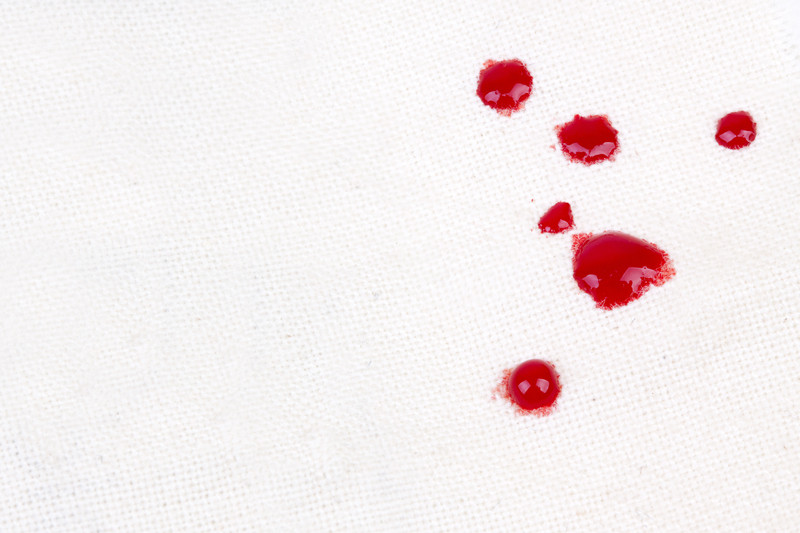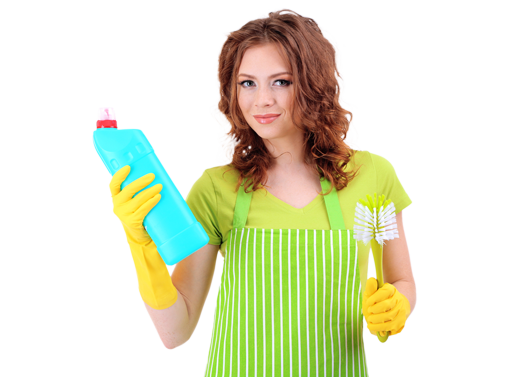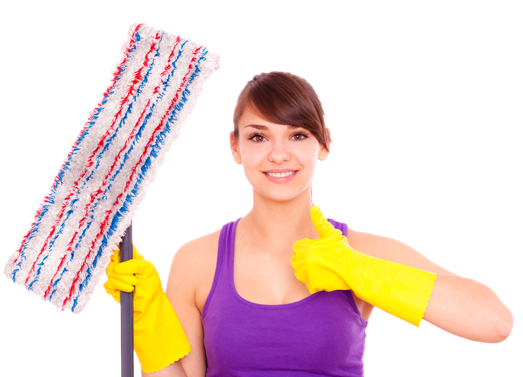Revitalize Your Stovetop: Banish Burnt-on Residue
Posted on 03/10/2025
Revitalize Your Stovetop: Banish Burnt-on Residue with Proven Techniques
Is your once-gleaming stovetop marred by stubborn burnt-on residue and unsightly stains? You're not alone. Daily cooking can leave behind spills, grease splatter, and hard-to-remove gunk that make even the tidiest kitchens look neglected. Fortunately, you can restore your stovetop to its former glory with the right methods and a bit of elbow grease. In this comprehensive guide, we'll show you how to easily banish burnt-on residue and keep your stovetop sparkling clean.

Why Stovetop Cleaning Matters
A clean stovetop is more than just a mark of a well-kept home. Regular cleaning prevents the build-up of stubborn grime, improves appliance efficiency, and eliminates potential odors and bacteria. Burnt-on food residue can degrade stove performance and even pose a fire hazard if left unattended. Moreover, a tidy cooking space inspires culinary creativity and enhances your overall kitchen experience.
- Prevents appliance damage: Layers of residue can corrode surfaces and hinder burner function.
- Promotes a sanitary environment: Food remnants attract pests and harbor germs.
- Enhances kitchen aesthetics: A gleaming stovetop elevates your entire kitchen's appearance.
- Reduces smoke and odors: Freshly cleaned surfaces eliminate unwanted smells.
Understanding Your Stovetop: Types and Challenges
Before you tackle burnt-on messes, it's important to know your stovetop type. Each requires special care for effective cleaning:
Gas Stovetops
- Removable grates and burners can trap food and grease underneath.
- Caked-on spills often carbonize under high heat, creating stubborn black residue.
Electric Coil Stovetops
- Coils may hide spills, and drip pans accumulate charred debris.
- Repeated exposure to high temperatures can bake on sticky layers of residue.
Glass and Ceramic Stovetops
- Sleek and stylish, but easily scratched by abrasive scrubbers.
- Burnt-on sugar or sauces can leave persistent streaks and marks.
By matching your technique to your stovetop type, you'll clean more effectively and protect your appliance long-term.
The Ultimate Guide to Removing Burnt-on Residue
Ready to revitalize your stovetop and remove even the most stubborn burnt-on stains? Follow these steps for safe, successful cleaning.
1. Gather Your Cleaning Supplies
Preparation makes cleaning easier and more efficient. Here's what you'll need:
- Baking soda: A natural, gentle abrasive that lifts grime without scratching.
- White vinegar: Cuts through grease and loosens residue.
- Dish soap: Removes oils and helps dissolve sticky buildup.
- Microfiber cloths or sponges: Non-abrasive options to wipe and scrub.
- Plastic scraper: Dislodges tough burnt bits safely, especially on glass surfaces.
- Old toothbrush: Gets into crevices and around burners.
- Rubber gloves: Protects skin from cleaners.
- Spray bottle (optional): For vinegar or diluted cleaner solutions.
2. Initial Wipe Down
Once your stovetop is completely cool, start by wiping away loose debris and crumbs. Use a damp cloth or paper towel to clear the surface, making the next steps much easier.
3. Treating Burnt-on Residue
Here's where the real magic happens! Tailor your approach to your specific stovetop:
For Gas Stovetops
- Remove grates and burner caps and soak them in warm, soapy water for at least 20 minutes.
- Sprinkle baking soda over the burnt areas.
- Spray or pour a little white vinegar onto the baking soda--the fizzing action helps loosen debris.
- Let it sit for 10-15 minutes so the mixture can penetrate.
- Use a non-abrasive sponge or damp cloth to gently scrub the area. For stubborn patches, use a plastic scraper.
For Electric Coil Stovetops
- Remove coils and drip pans if your model allows. Wipe any crumbs from the coils with a damp cloth but avoid submerging electrical parts.
- Soak drip pans in hot, soapy water, then scrub with baking soda paste (mix with a bit of water).
- If needed, attack persistent burnt residue with a mixture of baking soda and vinegar. Let it bubble, then scrub and rinse clean.
For Glass or Ceramic Stovetops
- Sprinkle baking soda over cooled, dry surface.
- Lay a damp towel (soaked in hot water and wrung out) over the baking soda and let sit for 15 minutes.
- Gently wipe away softened residue. Resist the urge to use steel wool or abrasive pads--these scratch glass and ceramic!
- Stubborn areas can be carefully lifted using a plastic scraper held at a shallow angle.
Home Remedies for Burnt Stovetop Stains
Sometimes commercial cleaners aren't necessary. Try these DIY solutions to banish burnt-on grime:
Baking Soda and Vinegar Paste
- Mix 3 parts baking soda with 1 part water to form a paste.
- Apply liberally to burnt areas. Spray white vinegar over it to activate fizz.
- Let stand 15-20 minutes, then wipe clean with a soft, damp cloth.
Lemon Juice and Salt Scrub
- Combine equal parts salt and lemon juice to create a natural abrasive.
- Scrub burned spots gently, let sit for 10 minutes, then wipe away residue.
Hydrogen Peroxide and Baking Soda for Tough Stains
- Sprinkle baking soda over stubborn marks; drizzle hydrogen peroxide over the top.
- Allow to bubble and soak for 10-15 minutes, then scrub softly and rinse thoroughly.
Best Commercial Cleaners for Stubborn Residue
When home remedies aren't enough, a quality stove-top cleaner can make the job effortless. Look for products labeled safe for your surface (gas, electric, or glass). Popular options include:
- Bar Keeper's Friend - Excellent for removing tough stains from various surfaces without scratching.
- Weiman Cooktop Cleaner - Specially designed for glass and ceramic stovetops.
- Easy-Off Kitchen Degreaser - Cuts through the heaviest grease and burnt residue.
- Magic Eraser - Effective for spot touch-ups and edge cleaning.
Always read directions and test any new product on a small, inconspicuous area first.
How to Clean Stovetop Knobs and Dials
Don't neglect the knobs--these are frequent touch points and tend to attract grime.
- Remove knobs if possible, and wash them in warm, soapy water. Rinse and dry thoroughly.
- Clean around the knob bases with a toothbrush or cotton swab.
- Wipe down with a microfiber cloth dampened in diluted dish soap for extra shine.
Dealing with Persistent or Tough Burnt-on Residue
Soaking Method
- For metal grates and drip pans, an overnight soak is sometimes needed. Fill a sink with hot water and dish soap, submerge items, and let soak overnight. Scrub clean the next day.
Steam Cleaning
- If you own a steam cleaner, use it on high to loosen baked-on gunk without chemicals. This is especially effective for glass stovetops and around burners.
Using a Razor Blade for Glass Stovetops
- Stubborn residue on ceramic or glass stovetops may require a razor blade scraper. Hold it at a shallow angle and gently scrape--never gouge or dig to avoid scratches. Always use a blade designed for this purpose.
Preventative Maintenance: Keep Your Stovetop Looking New
Prevention is always easier than a laborious deep-clean. Incorporate these habits into your routine for a consistently radiant stovetop:
- Wipe up spills promptly: The sooner you clean, the less likely stains will bake on.
- Use burner liners: Disposable or reusable liners catch drips under burners on gas or electric stovetops.
- Clean while surfaces are still warm (but safe to touch): Warmth helps loosen residue, but never attempt to clean a hot stove to avoid burns.
- Establish a weekly cleaning routine: Even a quick wipe-down makes a difference.
- Deep clean monthly: Remove grates, knobs, and drip pans for a thorough wash.
- Check for gas leaks or electrical issues: Unusual smells or uneven heating could signal maintenance needs--keep your stove safe and functional.
Common Mistakes to Avoid When Cleaning Stovetops
While it's tempting to attack residue with brute force, improper techniques can damage your appliance. Avoid these pitfalls:
- Using steel wool or abrasive pads on glass: These scratch surfaces, making future cleaning harder.
- Pouring water on electric parts: Always unplug or turn off appliances before cleaning and avoid soaking electrical elements.
- Skipping protective gloves: Harsh cleaners or hot water can irritate skin.
- Mixing cleaning chemicals: Never mix bleach with ammonia or vinegar--dangerous fumes can result.
- Leaving wet surfaces: Dry thoroughly to prevent rust and smearing.

Frequently Asked Questions about Burnt-on Stovetop Residue
Q1: Can I use oven cleaner on my stovetop?
A: Most oven cleaners are too harsh for stovetop surfaces and can cause discoloration or damage. Use products specifically labeled safe for stovetops, or stick to gentle methods like baking soda and vinegar.
Q2: What if burnt-on residue still won't budge?
A: For especially stubborn stains, repeat your soaking and scrubbing process a few times rather than resorting to highly abrasive tools. Consistency is key. For glass, try a razor blade (used with care).
Q3: How often should I deep-clean my stovetop?
A: A weekly routine wipe-down is ideal for light maintenance, with a deeper clean (removing grates, knobs, drip pans) recommended once a month, or as needed based on your cooking habits.
Q4: Are there natural alternatives to chemical stove cleaners?
A: Yes! Baking soda, vinegar, lemon juice, and even hydrogen peroxide are safe, effective, and eco-friendly options for cleaning stovetop residue.
Conclusion: Enjoy a Sparkling Stovetop Every Day
Banishing burnt-on residue doesn't have to be a dreaded chore. With the right tools, techniques, and a bit of consistency, you'll revitalize your stovetop and enjoy a beautiful, functional kitchen centerpiece every day. Whether you choose simple home remedies or an effective commercial cleaner, maintaining a clean stovetop is a rewarding investment in your home's health and appeal.
Remember, the secret to an effortlessly clean stovetop is prevention and routine. Treat spills quickly, deep clean regularly, and never underestimate the value of the humble baking soda and vinegar combo. Your kitchen will thank you!
- Ready to give your cooking space a facelift? Start with your stovetop and experience the transformation today.
- Share your stovetop revitalization tips or success stories with friends and family-because a cleaner kitchen is a happier kitchen!




